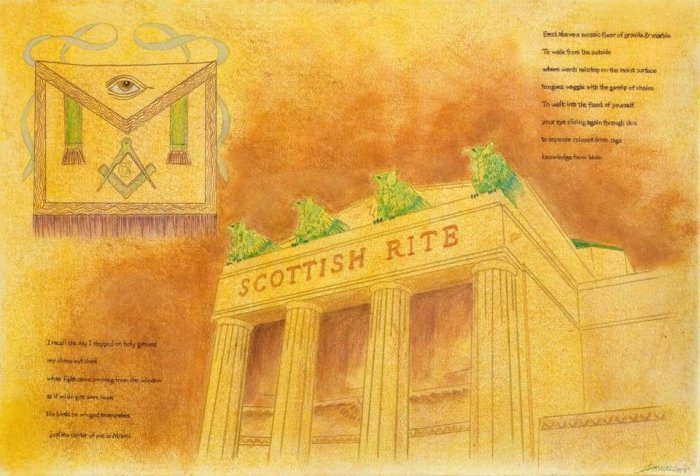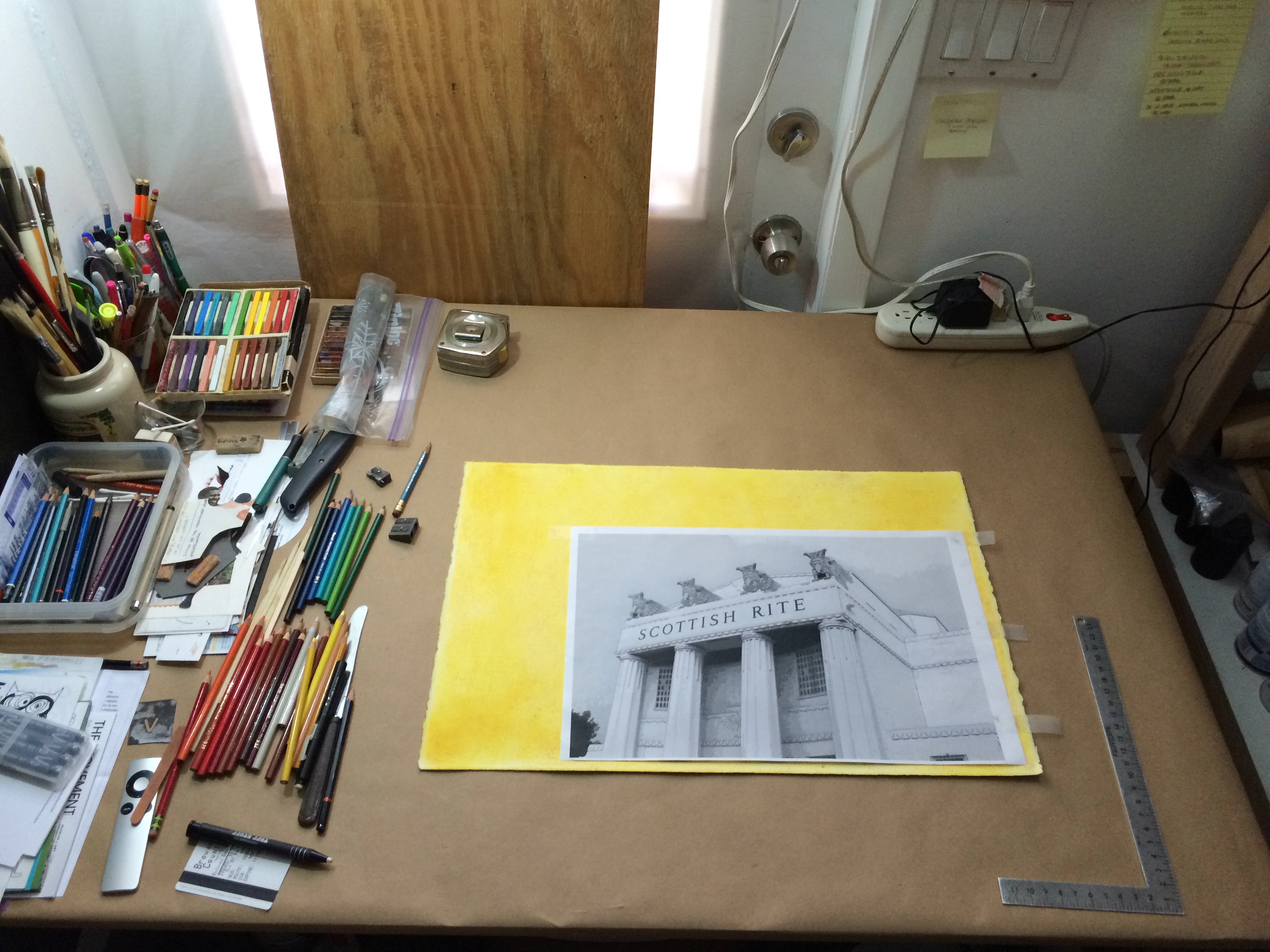
By Anne Tschida (edited version)
Downtown Miami: The Ground Beneath Our Feet, An Artists’ and Writers’ Collaboration is a hybrid of an exhibit. It’s about art, literature, Miami architecture and history, and all about collaboration — a collaboration between artists and writers on one level, and between the community and efforts at preservation on a broader one.
The Ground Beneath Our Feet is perfectly placed in a space in Miami Dade College Museum of Art + Design (MOAD) in the Freedom Tower, with windows overlooking a downtown skyline that is changing at warp speed, overwhelming its earliest architecture.
Hanging on the walls are works of art from 24 locals, each of the dozen pieces a coupling of a writer and a visual artist, and each one addressing an aspect of unique architecture or historically important sites. They are actually prints, as the original pieces — some of them very tactile in their materials — make up a one-of-a-kind art book, which sits on a table in the middle of the gallery.
The timing of the exhibit couldn’t be better. As was punctuated by the ceremony for the Pritzker Architecture Prize, the most esteemed award in that field in the world (held in Miami for the first time in May), the city is arriving as a center for contemporary architecture. But it is also a city notorious for neglect of structures from its past.
Artist Onajide Shabaka is known for his environmentally inspired drawing, photography and sculpture, often a simple flower or tree; this is a lush, figurative painting of the building. He collaborated with Adrian Castro, a well-known performative poet who threads Afro-Caribbean religious themes into his writing.
[T]he complete texts the writers penned rarely made it onto the artwork, explains Nickless, who organized the exhibit along with another artist included in the project, Rosemarie Chiarlone. The entire texts are printed in another mini-book, set in a pouch in the back page of the main artist book.
Nickless is part of the Word + Image Lab (WAIL), founded in 2009 to promote cross-disciplinary interaction in a sometimes fractured arts world. The group produced several art-writer events and then began a partnership with MOAD, which gives it space for a number of shows.
Still, WAIL is a DIY project, according to Nickless. The group raises its own funding and curates these exhibits independently. For Ground, she got The Villagers Inc., a historic preservation organization, to provide underwriting. The WAIL projects should be seen as an open-ended conversation, not one-off exhibits, she says, building on each other to bring varied artists together and continue promoting a wider awareness of conservation.
For Ground, Nickless says, WAIL asked 12 artists to choose a writer to work with. Some had worked together for a long time, others were first-time collaborations. But the final results were all created within the last six months.
Sharing the originals, Nickless carefully turned the pages of the delicate book, the focal point of this exhibit, as though it too were a relic.
The 12 pages of double spreads start with a map dotted with drawings of marine and swamp life, made from archival ink-jet print, watercolor and beeswax, and incorporating a good amount of text. The map is of the first excavated archaeological site in South Florida, the Miami Circle — showcased in this project as a collaboration between another artist instrumental in the founding of WAIL, Tom Virgin, and award-winning poet and Miami Dade College professor Michael Hettich. When looking through and gently touching the pages, you can see why the prints hanging on the walls don’t quite do the originals justice.
The rest of the downtown sites explored here are the Brickell Mausoleum, the Alfred I. Dupont Building, the Huntington Building, the Olympia Theater, the First Federal Courthouse, the U.S. Post Office and Courthouse, and the Freedom Tower itself. Among the artists are Felice Grodin and Michelle Weinberg. Writers include novelist John Dufresne.
The Freedom Tower book representation is a joint creation by Chiarlone and her long-time collaborator, writer Susan Weiner. The 1925 pink icon is a symbol of Cuban Miami, its classical Mediterranean Revival-style architecture still able to stand out amid the looming glass high-rises that surround it. But Chiarlone and Weiner have stripped out the tropical color, leaving an image — in graphite and hand-cut paper — that details the Tower’s incredible design and text that highlights its metaphorical place as a beacon of hope for refugees who have also become part of Miami’s historical landscape.
Read full text here: http://www.miamiherald.com/entertainment/visual-arts/article27212293.html#storylink=cpy
